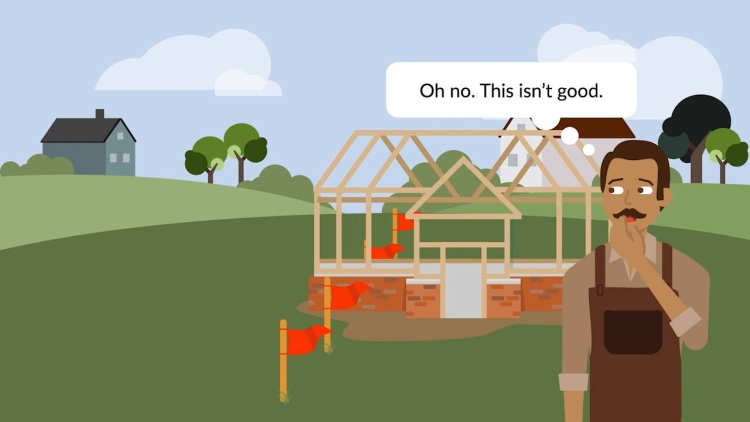Pile v. Pedrick
Pennsylvania Supreme Court
31 A. 647 (1895)
- Written by Melanie Moultry, JD
Facts
Pile (plaintiff) and Pedrick (defendant) owned adjoining properties. Pedrick hired a surveyor to locate his property’s boundary line, prior to building a factory on the property. Pedrick sought to avoid building on Pile’s land, in order to prevent injury from factory-machine vibrations. Due to the surveyor’s error, the factory’s foundation wall encroached onto Pile’s property below the surface by one and three-eighths inches, for 50 feet. However, a brick wall built on the foundation was located entirely on Pedrick’s land. Pedrick attempted to negotiate with Pile by offering to make the brick wall a common wall and paying Pile damages for trespass. Pedrick also offered to allow Pile free use of the wall, on the condition that the third and fourth-floor factory windows would remain open until Pile chose to use the wall. Pile declined the offer and sought an injunction to remove the wall and windows. Pedrick’s answer to the injunction asserted that the wall was located entirely on his property. The court ordered Pedrick to remove the portion of the wall that encroached on Pile’s property and prohibited workers from entering onto Pile’s property to remove the wall. The court also ordered Pile and Pedrick to split court costs. On appeal, Pile claimed that the court erred in not directing Pedrick to remove the windows in the wall. Pedrick claimed that the court erred in failing to allow workers to enter Pile’s property to remove the portion of the wall encroaching on Pile’s property and in ordering the parties to split court costs.
[Editor's Note: The Pennsylvania Supreme Court issued two separate decisions in this matter, one addressing Pedrick's appeal from the lower court's decree and one addressing Pile's. For our brief on the court's other decision, please see https://www.quimbee.com/cases/pile-v-pedrick.]
Rule of Law
Issue
Holding and Reasoning (Williams, J.)
What to do next…
Here's why 899,000 law students have relied on our case briefs:
- Written by law professors and practitioners, not other law students. 47,000 briefs, keyed to 994 casebooks. Top-notch customer support.
- The right amount of information, includes the facts, issues, rule of law, holding and reasoning, and any concurrences and dissents.
- Access in your classes, works on your mobile and tablet. Massive library of related video lessons and high quality multiple-choice questions.
- Easy to use, uniform format for every case brief. Written in plain English, not in legalese. Our briefs summarize and simplify; they don’t just repeat the court’s language.






